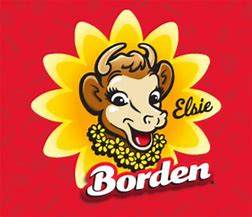I monitored a biology class today at a local high school. Since
it was a science class with no freshman, the classes were reasonably quiet and
well behaved.
On the teacher’s desk was a bottle of Elmer’s Glue All.
By now, you should know that old underwriters have inquisitive
minds, so it should not surprise you to know that I got curious about how Elmer’s
glue got started, and it has a connection to another very familiar, but totally
unrelated product.
Elmer's Products, or simply Elmer's is
an American-based company that has a line of adhesive, craft, home repair, and
office supply products. It is best known as the manufacturer of Elmer's
Glue-All, a popular PVA-based
synthetic glue,
in addition to other brands including Krazy Glue,
ProBond and CraftBond adhesives, and X-Acto cutting
tools.
Introduced by Borden,
it was spun off independently in 1999. The company was acquired in 2003
by Berwind Corporation, a privately held
investment firm. On October 5, 2015, Newell
Rubbermaid announced a $600 million deal to acquire Elmer's
Products.
The logo for the brand was based upon "Elmer the
Bull", mate of Borden's advertising mascot Elsie the Cow,
during the 20th century. Elmer's image continues to be featured in the company
logo.
The man who started the company is Gail Borden Jr.
On
May 11, 1857, with three employees and one product, Gail Borden founded the company that became Borden, Inc.
In 1929, Borden purchased the Casein Company of America, the leading
manufacturer of glues made from casein, a byproduct of milk. Borden introduced its first glue
product, known as Casecorez Glue, in 1947. Five years later, the
company began producing resin adhesives for use in woodworking, such as
Cascamite
Immediately
after World War II, the company expanded into synthetic resin glues
and, in 1947, the first multipurpose consumer white glue, known as Elmer's
Glue-All, was introduced. The glue was packaged in a glass bottle
with a Popsicle stick type wooden applicator attached with a rubber band.
Consumer feedback confirmed a need for an easier to use delivery method, which
prompted the company to develop easy to squeeze bottles featuring a twistable
orange cap, introduced in 1962. This innovation remains in use and is a
trademark of Elmer's Products.
https://en.wikipedia.org/wiki/Elmer%27s_Products
You
may have noticed that glues are made from casein, a by product of milk.
What
else is made with milk?
If
you answered, “ice cream”, give your self a gold star.
The character on the
glue bottles is named Elmer the bull.
Although Elmer the Bull did not become the marketing
symbol for Borden's adhesive line until 1951, he had been a familiar household
name since the 1940s. Elmer was designed in 1940 by David William Reid. Reid
was part of the advertising team that developed Elsie the Cow,
the well-known bovine marketing symbol for the dairy division. Elmer was a
huge hit with the public and was frequently seen alongside Elsie and their
children (Beulah and Beauregard created in 1948, and twins Larabee and Lobelia
in 1957])
in most promotional and advertising campaigns.
In 1951, Elmer the Bull was officially chosen to be the
marketing symbol for all adhesives in the Borden line, and his portrait has
appeared on Elmer's packaging ever since.
Borden, Inc., was an American producer of food
and beverage products, consumer
products, and industrial products. At one time, the company
was the largest U.S. producer of dairy and pasta products. Its
food division, Borden Foods, was based in Columbus, Ohio,
and focused primarily on pasta and pasta sauces, bakery products, snacks, processed cheese, jams and jellies,
and ice cream.
It was best known for its Borden Ice Cream, Meadow Gold milk, Creamette pasta,
and Borden Condensed Milk brands. Its consumer products and industrial segment
marketed wallpaper, adhesives, plastics and resins.
By 1993, sales of food products accounted for 67 percent of its revenue. It was
also known for its Elmer's and
Krazy Glue brands.
After significant financial losses in the early 1990s and
a leveraged buyout by private equity firm Kohlberg Kravis Roberts (KKR) in
1995, Borden divested itself of its various divisions, brands and businesses.
KKR shut Borden's food products operations in 2001 and divested all its other
Borden operations in 2005. Borden dairy brands are currently used by Borden Dairy for
milk and by Dairy Farmers of America for cheese.
https://en.wikipedia.org/wiki/Borden_(company)
More than 20 years ago, I learned a life lesson from a friend
in Wisconsin named Don Cole, and the lesson is related to Borden’s blueberry ice
cream.
https://tohell-andback.blogspot.com/2010/05/how-blueberry-ice-cream-can-help-you.html


No comments:
Post a Comment